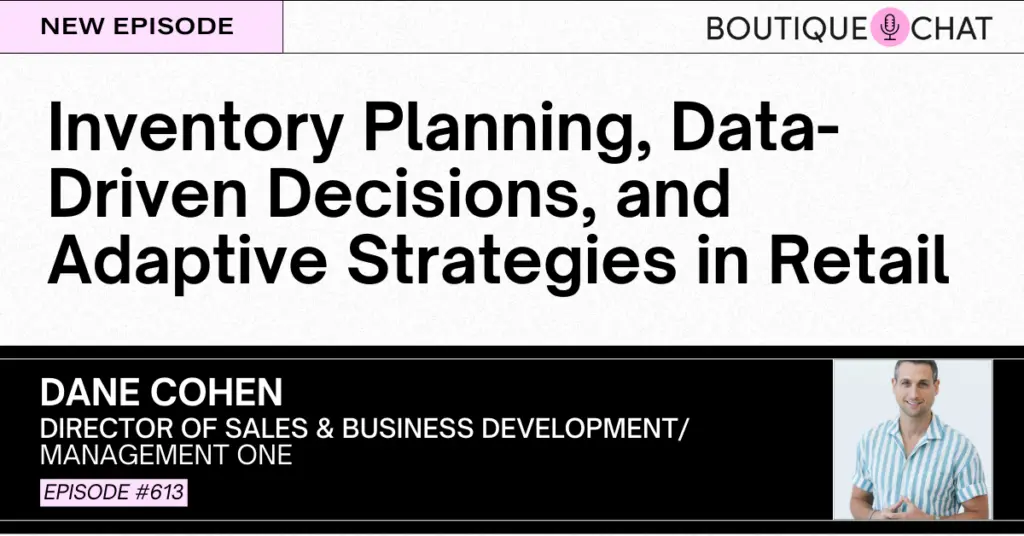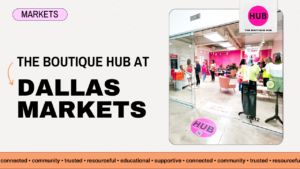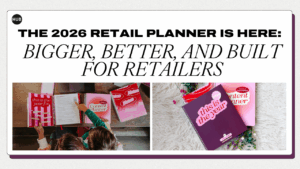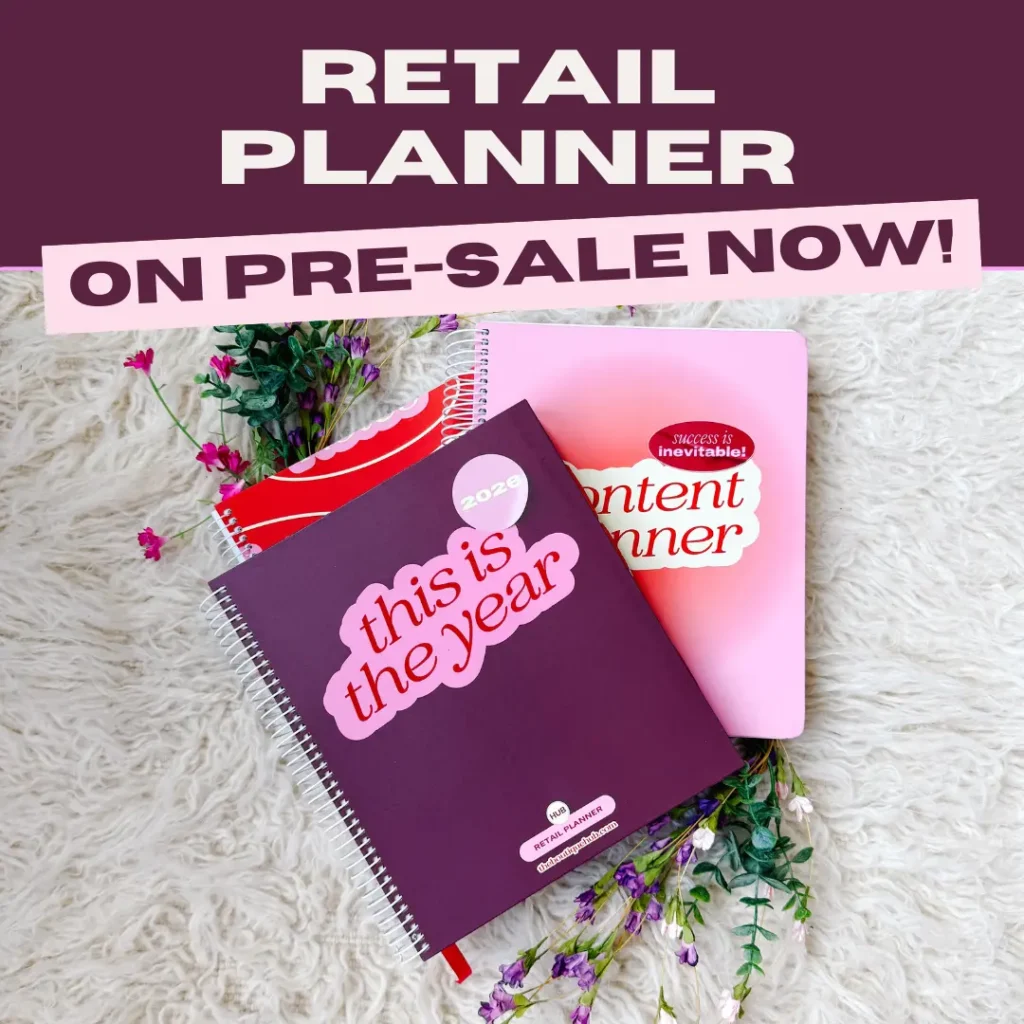APPLE PODCAST | SPOTIFY | YOUTUBE
Hey everyone, welcome back to another Boutique Chat Podcast episode! Today, I’m thrilled to dive into a topic that’s crucial for all retailers: inventory planning. I had the pleasure of chatting with Dane, a retail expert from Management One, on our podcast, and we’re here to make understanding your numbers simple and actionable.
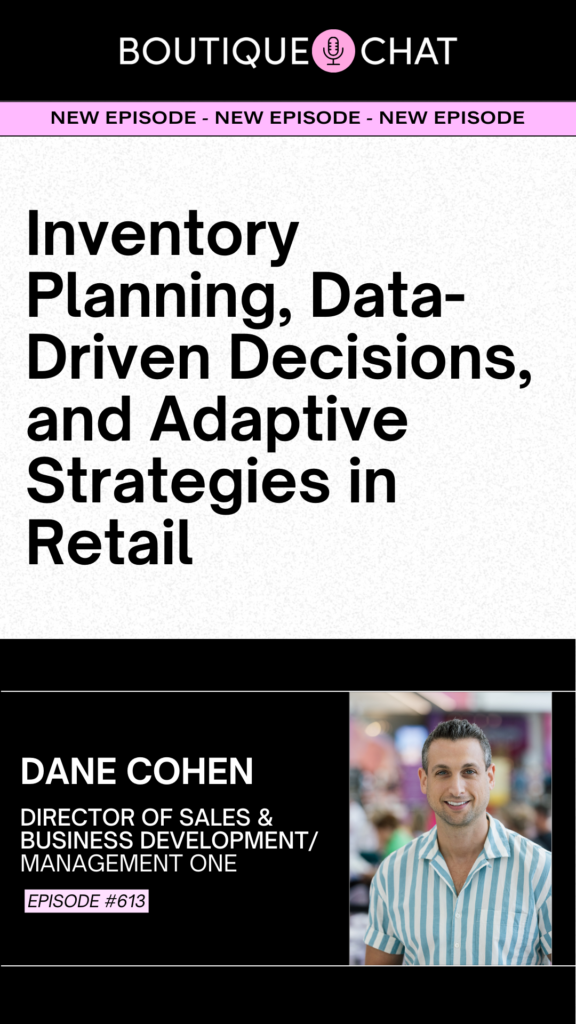
Inventory Planning, Data-Driven Decisions, and Adaptive Strategies in Retail
The Foundation: What is Management One?
First things first, let’s demystify Management One. This company steps in as your surrogate planning team, helping you understand what to expect from your business over the next 12 months. They forecast your sales, inventory goals, profit goals, and build budgets so you can go to market with clear category budgets. Essentially, they help you know how much to buy to meet your sales goals.
Why Knowing Your Numbers is Essential
Many retailers feel overwhelmed by terms like inventory planning, sales forecasts, and open-to-buy. Dane emphasizes that these concepts are fundamental. Imagine going to market with a plan instead of winging it. It prevents overbuying, which can hurt your cash flow and profits.
Breaking Down Inventory Planning
1. Establishing a Class Structure:
- It’s vital to have a detailed class structure for your inventory, such as department, category, class, and subclass.
- Avoid broad labels like “tops” and instead, specify categories like “tank tops,” “graphic tees,” etc.
- For smaller retailers (under $500K in sales), start with 10-15 categories.
2. Sales and Inventory Analysis:
- Look at your past sales and inventory data, particularly comparing similar time periods from the previous year.
- Understand your stock-to-sales ratio by assessing how much inventory was needed to achieve past sales.
3. Seasonal Budgeting:
- Start by planning on a seasonal basis if month-to-month feels overwhelming.
- Compare your receiving budget (how much inventory you brought in) with your sales to find patterns.
- Use this analysis to decide where to increase or decrease inventory.
Key Reports to Pull
- Aged Inventory Report:
- Identify how long inventory has been sitting unsold.
- Merchandise older than 10 weeks should be considered for markdowns.
- Sales and Receiving Report:
- Track how much you received versus how much you sold.
- Calculate sell-through rates to understand how well products are performing.
- Markdown Strategy:
- Regularly review inventory that’s 8-10 weeks old.
- Implement maintenance markdowns to keep inventory fresh and unlock cash for new, productive inventory.
Real Talk on Retail Inventory Management
Ashley shares a vivid analogy from Paul at Management One, comparing inventory to bananas: green (fresh), yellow (ripe and ready to sell), and brown (overdue for markdowns). Retail inventory isn’t like fine wine—it doesn’t get better with age. Implementing a strategic markdown policy ensures you’re not stuck with “stinky bananas.”
Taking Action
If you’re feeling overwhelmed, remember that knowing your numbers starts with small, manageable steps:
- Ensure you have a proper class structure.
- Regularly pull and analyze sales and inventory reports.
- Plan seasonally and review your strategy month-to-month as you get more comfortable.
For new retailers, consider reaching out to inventory planning experts like Management One to guide you through the process. As you become more familiar with your numbers, you’ll find it easier to make informed decisions that drive your business forward.
In This Episode
Let’s Connect #AskAshley
- Have a question or guest recommendation? Let us know your feedback directly here!
- Do you love the Boutique Chat Podcast?! Subscribe to our podcast and after that, leave us a review on iTunes Apple Podcasts here!
Must Have Resources
- The Boutique Hub: Website | Facebook | Instagram | Pinterest | TikTok | YouTube
- Boutique Summit 2024
- Small Business Marketing Handbook
- Small Business Hiring Handbook
- Brand Owner Basics Masterclass
- Tradeshow Marketing Handbook
- 2024 Trade Show Calendar
- Boutique Hub Black
- Hubventory.com
Recent Posts:
- The Boutique Hub at the Dallas October Apparel
 The time has come for Dallas Market and the Hub team couldn’t be more excited! We know how busy market days can be so we wanted to make sure you guys are filled in on our schedule so you can come and stop by!
The time has come for Dallas Market and the Hub team couldn’t be more excited! We know how busy market days can be so we wanted to make sure you guys are filled in on our schedule so you can come and stop by! - The 2026 Retail Planner is Here: Bigger, Better, and Built for Retailers
 If you’ve been waiting for the next edition of our best-selling planner, the countdown is on! The 2026 Retail Planner is almost here, and this year brings exciting changes you’re going to love.
If you’ve been waiting for the next edition of our best-selling planner, the countdown is on! The 2026 Retail Planner is almost here, and this year brings exciting changes you’re going to love. - 3 Promotions to Run in October to Boost Sales & Engagement
 Looking for October promotion ideas for your boutique or small business? Discover 3 creative October promotions to attract customers, drive sales, and build engagement this fall.
Looking for October promotion ideas for your boutique or small business? Discover 3 creative October promotions to attract customers, drive sales, and build engagement this fall.
